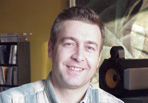|
Fourth
Visit Notes (23 February
2003)
I asked Ozhan to write about his system's
updates and give us his own impressions. So the
following narration belongs entirely to him.
"I was generally happy with Carys' sound except
the noise. These kind of directly heated SET amps
should have such a good regulated power supply,
otherwise 50 Hz AC noise directly couples to output
signal . The noise was such bad that I was not able
to listen to music after 21:00 o'clock (I mean you
should keep less volume at that hours and noise was
almost at the same volume as the music signal).
I made an investigation from that angle and
looked for 300B monoblocks, ended with Audionote
Quest 300B SET 9 Watts Monoblocks. AN has 5RG4
tube choked well regulated power supply and problem
ended there. Sound was much better then Carys
especially with KR 300BXSL tubes.
But I ended up with different problem that ANs
provide their full power at 300 mV of input signal,
this is at least 5 times smaller then a normal
amplifier input level. It made my 12 stepped
passive pre-amp unusable. I had to go with 24
stepped ones, otherwise you may imagine I had just
3 or 4 steps in volume control.
I tested the best active line stages I can
obtain that consist of Cellos, Pass Labs, Classe,
Nagra, Conrad Johnson,Electrocompaniet etc and all
limited the purity of sound. They all gave
different tonality to the system but worse, all
added distortion to the mid range band and to the
soundstage. I ended up with Audio Consulting
passive transformer preamp which was the cure to
the system. This preamp thought me that, regardless
of brand and level most active preamplifiers
degrade the sound but add their own coloration to
the sound. Preamplifiers are generally used to
achieve desired tonality in hi-end systems. I am
sure not everybody will agree with that but this
fact was very obvious in my system. Preamplifiers
do not stipulate such weaknesses in most systems
but higher efficiency speakers (>100 dB/W/m)
reveal them more.
Passive transformer preamp does not have
weaknesses of other potentiometer or purely
resistive passive ones since it adds almost no
resistance to signal path. At that time, power
amp's impedance should be driven by the source unit
and if you do not have proper impedance matching,
you may see lack of dynamics at any sound level. My
new Kora Hermes 24/192 tube DAC (modified
for me in the factory) did not create such a
problem with AN's.
CEC TL 5100 CD Transport is replaced by
Acoustic Arts Drive 1 transport.
PS Audio P300 supplied the power of
entire system except Avantgarde Uno's. I use PS2
format which gives better depth and soundstage with
my system. Emphasis AC Filter supplies isolated AC
power to Uno's.
All interconncts are my new DIY air dielectric
pure silver cables (it will be in ihifi.org/DIY
section soon).
These Avant Garde Uno II loudspeakers
really killed me for the last two years: I had to
replace three sets of power amps, three pre-amps
and other stuff and most of these changes were not
to achieve a better sound but in order to get rid
of technical problems. I sometimes felt very
desperate as the mentioned equipment could not be
found locally.
Driving an active speaker of 100 dB efficiency
is a big challenge for most electronics, all hidden
aspects come to surface, even the noise of a
ringing GSM phone in another room is picked up by
the system in the living room. My friend Laurent
Labat Camy was so kind to bring his studio
equipment to my place and to help me to make the
speaker adjustments to get a flat 20 Hz - 20 KHz
response in my room.
How does my system sound after all these
changes? I think it got as close as to the live
performance. There has been a considerable
improvement in the sound stage's width and depth (I
noticed that whenever I reduced the distortion
level it had a very positive effect on soundstage).
Dynamics have improved and the use of my own DIY
interconnects pushed the sound to the back of
speakers. To conclude, I can easily say that I'm
very pleased with my system's sound for the time
being. Although I'm concious that this is an open
ended process, I'm intending to enjoy my system as
it is today without making any major changes for a
while (which is of course very relative!).
|

